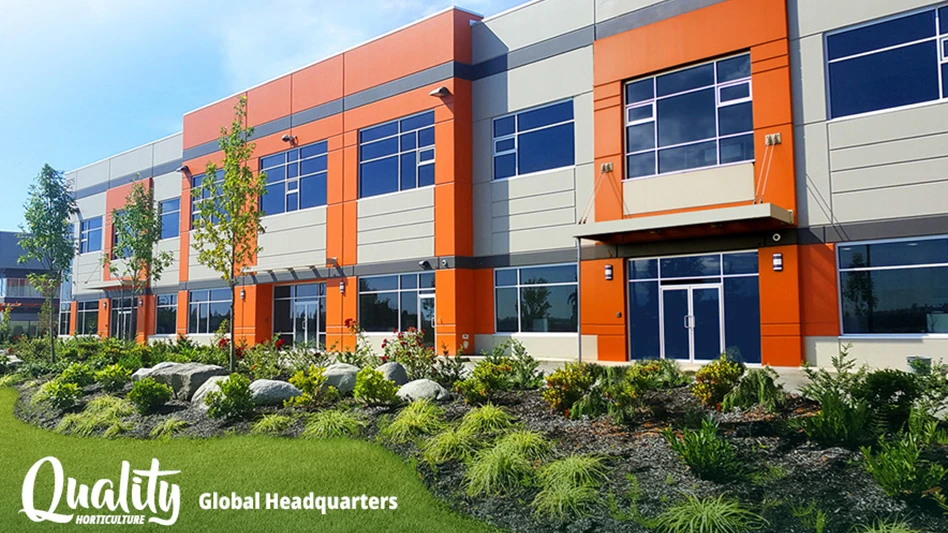
Begonias are a popular spring crop. Whether for landscape beds or hanging baskets and patio containers, or for consistently colorful shows of flowers (Fig. 1) or interesting foliage, begonias provide solutions. If you are looking for a begonia to fit a specific need, you can probably find one that will do the trick.
When the variation in container sizes (six-packs to hanging baskets) and flowering requirements (light intensity, day length, etc.) for the different species are taken together, begonias can pose some challenges. However, this article aims to review the different types of popular begonias and how to control their flowering.
Wax begonias
Wax or fibrous begonias are the most widely grown begonia. Since these begonias are most commonly used in landscape beds, they are produced in packs and marketed in flats. While premature flowering of wax begonias can be a problem, since wax begonias are grown in small containers, a more common problem is plants that are too large from delayed flowering.
Flowering of wax begonia is unaffected by day length or photoperiod. While day length does not affect flowering, the total amount of photosynthetic light a plant receives affects flowering. Although wax begonia can be grown in the shade in the landscape, the time to flower is usually shorter with increasing light intensity or daily light integral (DLI).

Tuberous begonias
Tuberous begonias are frequently grown as a hanging basket crop because their colorful, pendulous flowers can create impressive displays. However, since these crops are produced in hanging baskets, they pose two challenges. The first challenge is simply the longer time to finish due to the larger container size. As a result of the long crop time we can run into the second problem — premature dormancy.
Hanging baskets are started early in the season when days are short, and tuberous begonias can start to go dormant and slow down or cease shoot development unless the day length is altered. Tuberous begonia dormancy is controlled by photoperiod. Day lengths longer than 12 hours promote the growth of leaves and flowers, while those less than 12 hours will cause the plant to develop tubers. Tuber growth comes at the expense of shoot growth and, therefore, flowering. To keep tuberous begonias from forming tubers and going dormant, begonias must be grown under long-day conditions in the greenhouse. The longer the day length, the stronger the promotion of flowering. In addition to day extension lighting, night interruption lighting is also effective for promoting growth and flowering.
Reiger begonias
Reiger, heimalis, and elatior begonia are all different common names for the same begonia (Fig. 2). While we commonly think of reiger begonias as indoor potted plants, they also make great summer annual bedding plants for borders and containers. Similar to tuberous begonias, reiger begonia flowering is affected by day length. However, unlike tuberous begonias, reiger begonias are short-day plants.
To maintain plants in a vegetative state, such as during propagation or after transplanting into larger containers to bulk up vegetative growth, you can provide long days as previously described, with day-extension or night-interruption lighting. To promote flowering, plants need to be exposed to short days. While you may have naturally short days earlier in the spring season, you will want to make sure that you have some space with black cloth for providing short days late in the spring season.
Cane begonias
The “cane” begonias include a few other types of commonly grown begonias, such as the angel and dragon wing begonias. The name for the group is a reference to the upright stems from the parentage, Begonia aconitifolia and B. coccinea. Cane begonias will flower under either short or long days. However, flowering occurs more quickly under short days, whereas growth has a more upright form under long days.
Foliage begonias
Foliage begonias are frequently produced for their foliage and texture of vegetative growth, so there is not much concern about neither inhibition nor promotion of flowering. The flowers are not particularly showy or attractive, so there is no need to promote flowering. You also don’t need to worry about keeping the crops vegetative; since the flowers aren’t very large, they don’t detract from vegetative growth.
Take-home message
Begonias are an important floriculture crop, and for good reason. They provide lots of color and texture with their flowers and foliage. But with that diversity comes variation in flowering requirements. Whether it is day length or light intensity, you can steer begonias to achieve the growth and flowering you need.
Christopher is an assistant professor of horticulture in the Department of Horticulture at Iowa State University. ccurrey@iastate.edu

Explore the June 2017 Issue
Check out more from this issue and find your next story to read.
Latest from Greenhouse Management
- North Carolina Nursery & Landscape Association announces new executive vice president
- Plant Development Services, Inc. unveils plant varieties debuting in 2025
- Promo kit available to celebrate first National Wave Day on May 3
- Applications now open for American Floral Endowment graduate scholarships
- Endless Summer Hydrangeas celebrates 20 years with community plantings
- Invest in silver
- Garden Center magazine announces dates for 2025 Garden Center Conference & Expo
- USDA launches $2 billion in aid for floriculture growers





